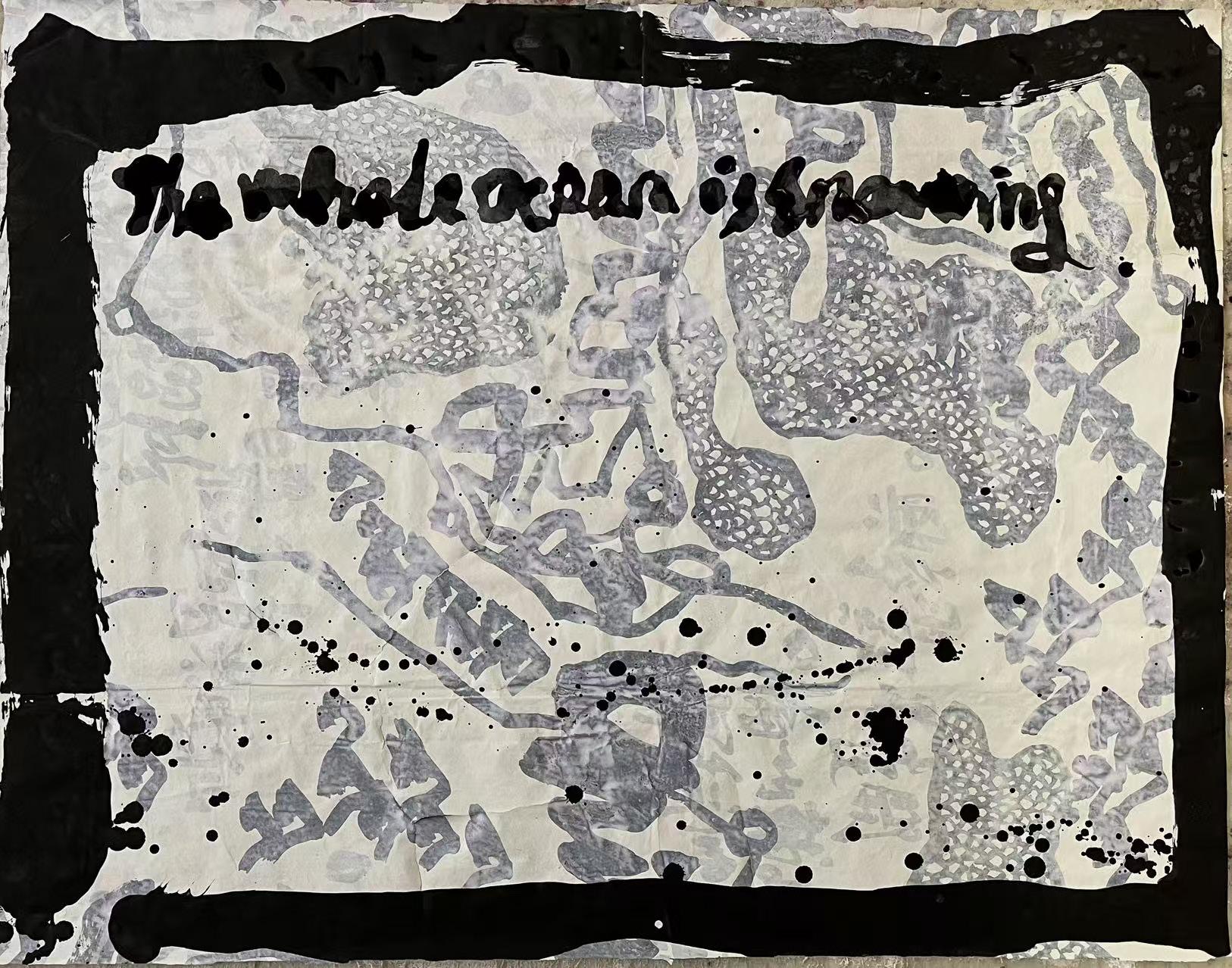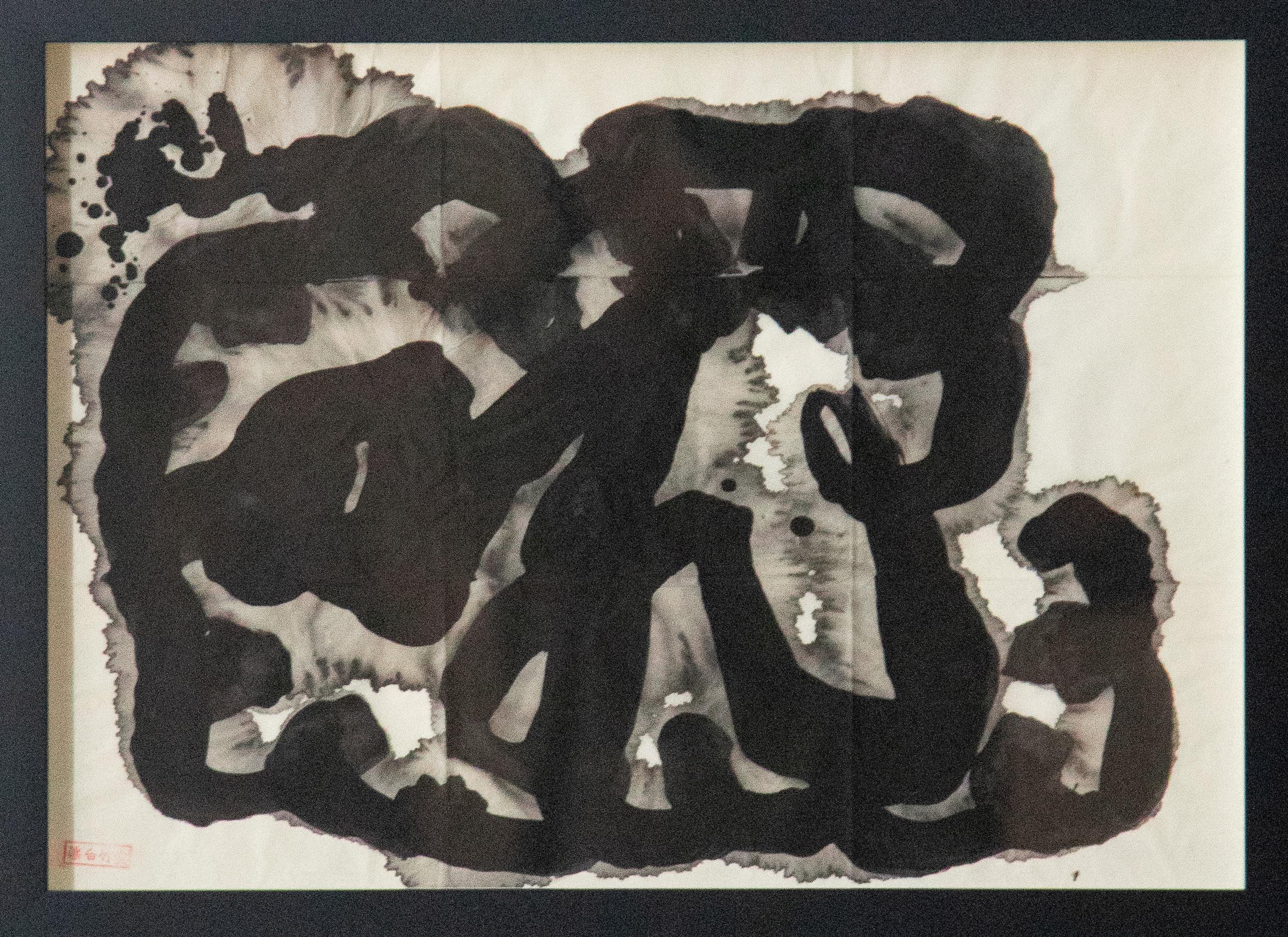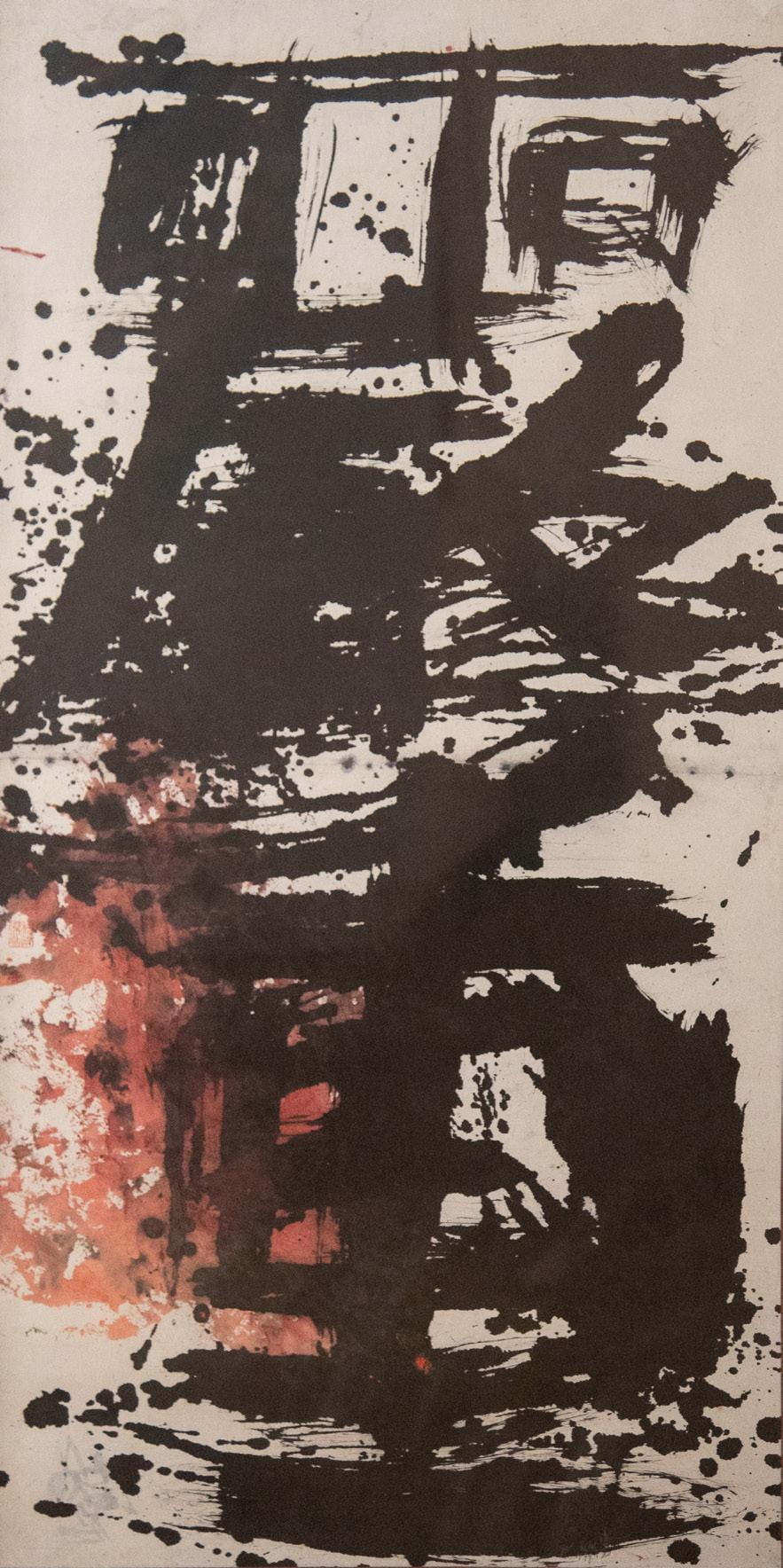






b. 1956 in Foshan, Guangdong Province, China; lives and works in Paris, France, and Ittlingen, Germany
Yang Jiechang’s artistic practice as a calligrapher-painter turned global social actor inverts the contemporary Chinese art world norm of using Western avant-garde forms to critique contemporary Chinese society. He accomplishes this by adopting the performative expressivity of the traditional brush and the paradoxical dialectics of pre-modern Daoist skeptics to expose the underlying social and cultural forces that shape our contemporary global reality.
Starting with his censored Massacre series in which he confronts the human toll of politically-violent authoritarian government, and continuing with his Crying Landscape series which he created for the 2003 Venice Biennale, Yang has made the critique of power, wealth, violence and terror central concerns of his artistic practice. With his purely abstract Layers of Ink works, which he inaugurated for the seminal 1989 trans-national show Magiciens de la Terre, and his figurative Ascension and Tales of the Eleventh Day series, Yang deals with the contrasting themes of material and spiritual transcendence, liberation of the individual, universal love and nature. When Yang deploys seductively masterful technique in service of psychologically disturbing or even horrifying imagery, our experience approaches the sublime—a realization of the inhuman that is both monstrous and transcendent.
Already in his student days at the Guangzhou Academy of Fine Arts where his graduation project Massacre (1982) on the devastation of the Cultural Revolution was censored, Yang Jiechang had adopted the position of provocateur. Following graduation he withdrew from art to study with Buddhist and Daoist masters. This led him to search for simplicity when he returned to painting. In 1988 he moved to Europe, where he has remained, living between Paris and a village near Heidelberg.
Among other places, Yang’s work can be found in the collections of Los Angeles County Museum of Art, Los Angeles; Brooklyn Museum, Brooklyn; Cantor Arts Center, Stanford University, Stanford; Berkeley Art Museum, Berkeley; The World Bank, Washington; Rockefeller Foundation, New York; Ministry of Culture, France; M+ Museum, Hong Kong; Hong Kong Museum of Art, Hong Kong; Hong Kong University Art Museum, Hong Kong; Guangdong Museum of Art, Guangzhou; Chengdu Museum of Art, Chengdu; Shenzhen Fine Art Institute, Shenzhen; Fukuoka Art Museum, Fukuoka; Sonje Museum of Contemporary Art, Kyongju, Korea; Museum for Arts and Crafts, Hamburg; Annie Wong Art Foundation, Vancouver; Swatch Collection, Switzerland; François Pinault Foundation, France; Ullens Foundation, Switzerland; Yageo Art Foundation, Taiwan; and Eslite Inc., Taiwan.


Cutting The Earth With a Knife, 1984
Ink on xuan paper
23 5/8 x 14 1/8 in | 60 x 36 cm


Cutting The Earth With a Knife, 1984
Framed: 66 x 38.75 cm | 26 x 15.25 in


on xuan paper
14 3/8 x 20 1/4 in | 36.5 x 51.5 cm


1984
Framed: 39.25 x 54 cm | 15.5 x 21.25 in


Ink and acrylic on paper mounted on canvas
27 1/2 x 35 3/8 in | 70 x 90 cm


The Whole Ocean is Snowing, 2022


Zhong, 1981
Ink and color on xuan paper mounted with silk
54 3/8 x 27 1/8 in | 138 x 69 cm